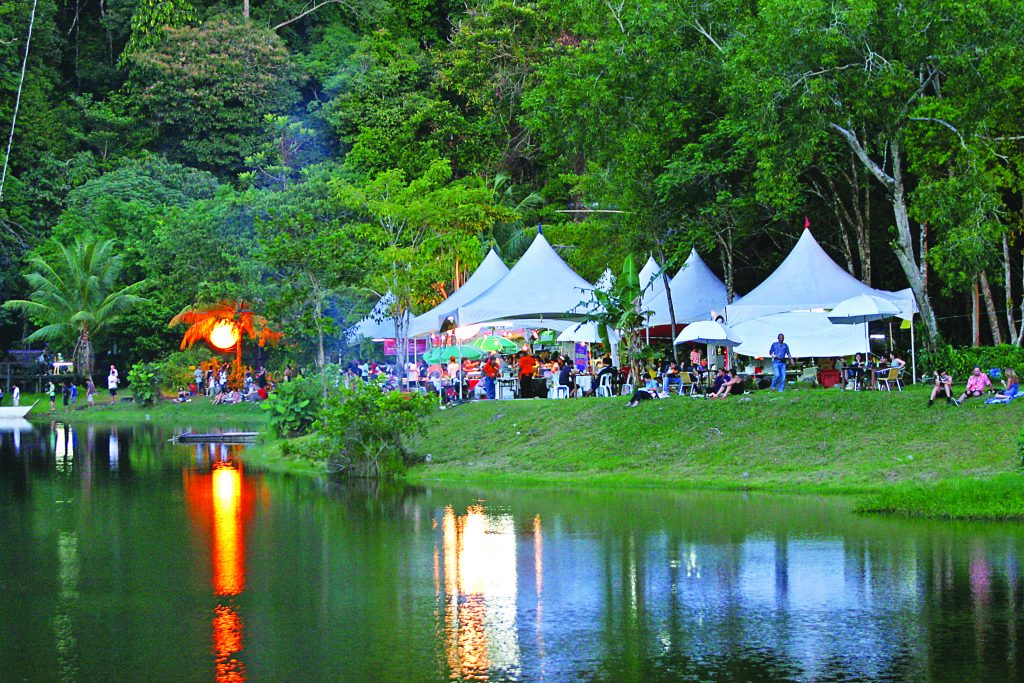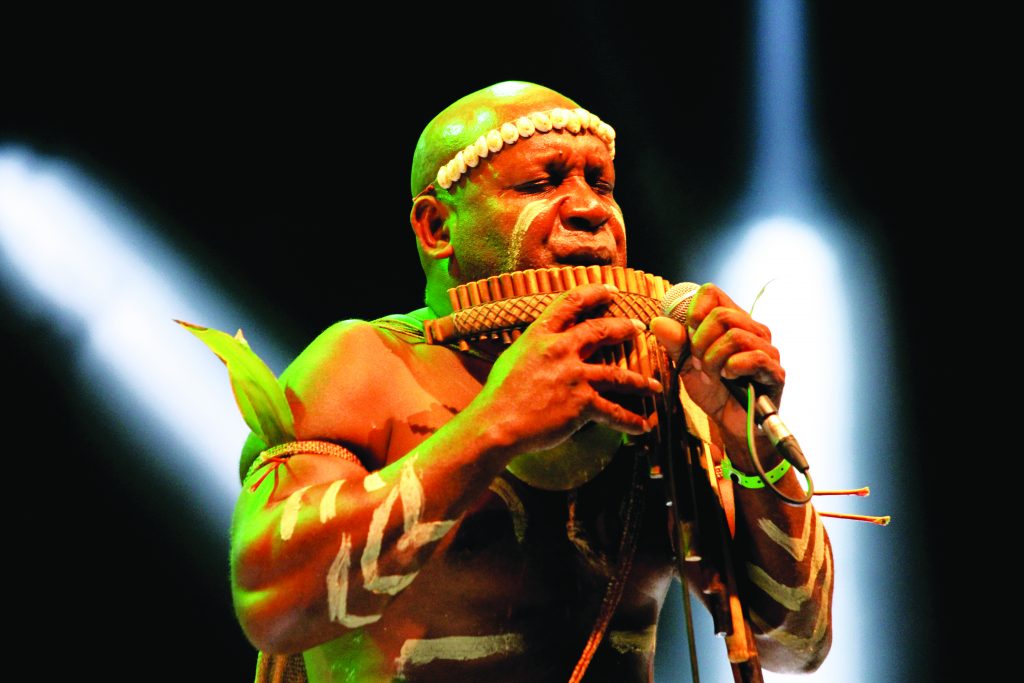Pulsating to a world beat, the Rainforest World Music Festival in Sarawak attracts tens of thousands of visitors a year.

It is a warm and humid night in the rainforests of Sarawak, and I am surrounded by thousands of sweaty bodies. The crowd is moving to a musical beat that constantly changes over the course of the festivities.
The evening started with a trio of Mongolian throat singers whose melodious but guttural sounds resembled the wind and birds of the Gobi Desert and ended with a madcap trio of Scotsmen, one of whom was suspended from the shoulders of a fellow musician upside down while playing the accordion.
Welcome to the Rainforest World Music Festival staged on the spacious grounds of the Sarawak Cultural Village in coastal rainforests just beyond Damai Beach.

I have been to several of these festivals and they have all been memorable with an eclectic range of musicians who perform to enthusiastic crowds in an atmospheric setting. The festival began in 1998 and is regularly voted one of the top 25 festivals of its kind by respected world music magazine, Songlines.
Ticket sales are capped to ensure festivalgoer comfort as the site can only accommodate so many. The audience sprawls over the seven-hectare site with many happy to laze around the lake that dominates the cultural village while watching the performances on strategically located big screens.
The festival was designed to entertain audiences with its varied repertoire of musical genres. While not all artists win over the entire crowd, the festival’s artistic direction has stuck to its principles and is prepared to take the occasional musical risk.
While the music is the main reason for attending, it usually does not matter who is performing, as the musicians are all superb and often the best in their genre.

SOUNDS OF THE FOREST
This year, the forests will again resonate with the infectious beat of over 20 bands and artists on 12-14 July. Staged at the base of the 800-metre-high Mount Santubong, the festival attracts some 20,000 fans over its three-day duration.
Two jungle-backed stages – the larger Jungle Stage and the smaller Tree Stage – enable the music to continue without a break. The music starts at 7.30 pm and continues to just after midnight.
An Iban Miring Ceremony is usually performed on the first evening to honour the spirits, gods and ancestors and to bring success to the festival. Saturday night attracts the biggest crowd, but the liveliest performers usually appear on Sunday evening to ensure a climactic conclusion before all performers return to the stage for a grand group finale.

ANCESTRAL DNA
A question that constantly arises at festivals like this is, just what is world music? One musician describes it as “ancestral music – it’s in your DNA” while another labels world music as “storytelling – the struggle of the people – it is political and engaging.” Indeed, there are no geographical boundaries to world music as it is a style without borders.
The festival also supports the continuation of the music and culture of the numerous ethnic communities in Sarawak. Artists from Sarawak perform each evening and usually a sape (Sarawakian lute-like instrument) features on the programme.
The festival has seen the revitalisation of sape-playing and keeps the instrument alive and valued rather than having it doomed to a cultural museum.

JAM SESSIONS AND ETHNO BAZAAR
The festival is a Sarawak Tourism initiative to promote the state as a destination beyond adventure while providing a venue for locals and visitors to enjoy themselves in a magical rainforest setting. It provides the opportunity for the rhythm and beat of local music to combine harmoniously with global musical styles.
Each afternoon, musicians jam together and with members of the enthusiastic audience, who are encouraged to join in. Musicians exchange licks while many members of the audience join in the dancing, clapping and singing. Others perform in the intimate air-conditioned Rainforest Theatre.

These workshops are popular with families and children who enjoy the opportunity to learn more about the instruments or musical styles. The Iban longhouse is one of the venues for audience members to get on the floor to dance to the spirited music.
Other activities include a participatory percussive drum circle each evening, food and beverage stalls, and a world craft bazaar. The Cultural Village where the festival is staged is a year-round venue that displays local culture, arts and handicrafts.

FESTIVAL LINE-UP
This year concertgoers will be able to enjoy the following acts: Ana Alcaide (Spain), Ballet Folclorico de Chile Bafochi (Chile), Darmas (Malaysia), Druk Folk Musician (Bhutan), Duplessy and The Violins of the World featuring Guo Gan (France, China, Mongolia and Sweden), Ha Noi Duo (Vietnam), Kemada (Malaysia), Kila (Ireland), La Chiva Gantiva (Colombia), Macka B (Jamaica/U.K.), Mauravann (Mauritius), Mehdi Nasouli (Morocco), OKI (Japan), Olga Cerpa Y Mestisay (Canary Islands), Otava Yo (Russia), Rajery (Madagascar), San Salvador (France), Sangtam Naga (Nagaland), Sedaa (Mongolia), Spirit of the Hornbill (Malaysia), Staak Bisomu (Sarawak), Suk Binie’ (Sarawak), Suku Menoa (Sarawak), Tabanka (Cape Verde) and Talisk (Scotland).
Festival Facts
Location
Sarawak Cultural Village is located 30 kilometres from Kuching, Sarawak’s capital city. Festival shuttle buses operate to and from the site.

Weather
Sarawak has a tropical climate, so it is mostly hot and humid but comfortably cooler in the evening. The festival is staged in a rainforest, which could mean rain, so come prepared with a poncho, umbrella and sandals.
Tickets
Pre-paid tickets (check the website) offer better value than those purchased during the festival.
Accommodation
Damai Beach Resort is within walking distance of the site but is usually booked out for the festival. Most festivalgoers travel out from Kuching each day.
For more information, visit rwmf.com
**Photos by David Bowden.





